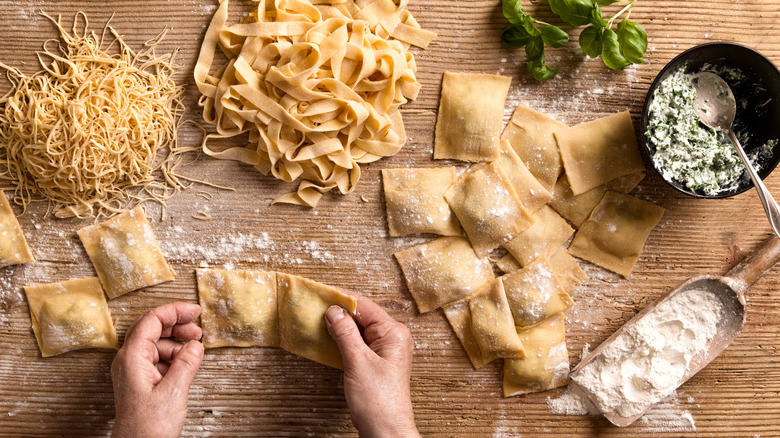Here's Why The Noodles In Canned Soups Never Get Soggy
Many people are increasingly skeptical about what's in their food these days and you really can't blame them. We have concerns about antibiotics in meat, growth hormones in milk, and pesticides in grains and vegetables. Even if most of it has disappeared by the time it gets to the shelves, that still means we are ingesting trace amounts of dangerous chemicals. It really comes down to whether we can trust if our food is actually good for us. So when people notice that the noodles in their canned soup are behaving differently than the kind they cook at home, it's only natural that they get curious about why that's happening.
If you've ever made soup, you know the noodles get soggy after a while. What was yesterday a beautifully thick chicken noodle soup has become a bowl of soft mush today. But why don't the noodles in a can of soup get soggy? It comes down to two factors: the ingredients in the noodles, and the way they are cooked separately from the broth.
The inside scoop on noodles
Noodles for canned soup are a processed food that are made with ingredients to help prolong their shelf life while ensuring quality. Specifically there are quite a bit of alkaline salts added. The practice originated with alkaline noodles, otherwise known as ramen noodles. Gluten and alkaline salts react to make a chewier, denser noodle that doesn't soak up water as well. This means noodles can sit in the broth for longer periods of time before they start to get mushy. Fun fact: Alkaline salts, like baking soda, are also the reason these noodles appear more yellow.
Another way soup manufacturers ensure they are making a quality product is by cooking the noodles separately from the broth and then later mixing them together. This gives them more control over how long the noodles are cooked, allowing them to determine how firm the noodles will turn out and account for the amount of time they will sit in a can of liquid. With these two methods combined, you get a long-lasting noodle capable of maintaining a quality texture for months or even years.

